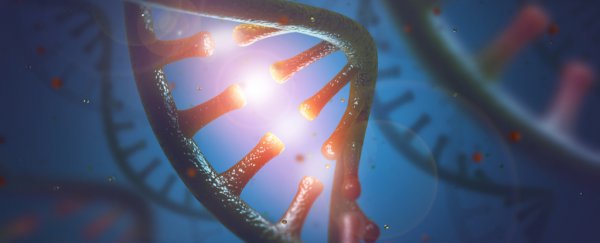Back in May, a small study claimed that the revolutionary gene-editing technology CRISPR-Cas9 was introducing hundreds of unwanted and potentially dangerous mutations.
If that was the case, we would have to seriously reconsider the safety of CRISPR, especially when used on humans. But now a paper has been published online claiming it was all a mistake, and the authors of the original study were doing a "disservice to the field."
The beauty of CRISPR is its unprecedented precision when it comes to changing specific bits of the genome without altering the rest. By snipping the DNA and inserting new sequences, researchers can make changes to plants and animals, and even treat diseases.
As we reported back in May:
In recent years, it's been used to tap into cancer's 'control centre', repair a mutation that causes blindness, treat genetic disease in living animals, and even modify human embryos to figure out what causes infertility and miscarriage.
While there have been signs of 'off-target' mutations occurring in preliminary trials, that hasn't stopped the technology from making its way to humans.
The first clinical trial to use CRISPR in actual subjects now underway in China, and the US and the UK are not far behind.
Because it's relatively cheap and easy for scientists to use, CRISPR has exploded onto the gene editing scene, so a study showing significant safety concerns would be a huge deal.
In May, a team of researchers found that two mice whose genomes had been altered using CRISPR, appeared to have hundreds of unwanted off-target mutations after the treatment, in contrast to a control mouse whose genome wasn't edited.
But now researchers from Harvard University and MIT are saying that there were serious issues with how that study was done.
In a paper published on the pre-print server bioRxiv, the team points out that the two gene-edited mice were genetically more closely related to each other than to the third, 'control' mice.
And that means that the reason those two mice had mutations not shared with the third mouse is because those mutations were already there, before the CRISPR treatment.
The study authors also point out that, given the location of these off-target mutations, it doesn't even make sense that CRISPR would be to blame.
"Given these substantial issues, we urge the authors to revise or re-state the original conclusions of their published work so as to avoid leaving misleading and unsupported statements to persist in the literature," the team writes in the paper.
If that's not done, the researchers argue, it would mislead other scientists into thinking that the strong statements in the study are actually supported by the data, when that doesn't appear to be the case.
Even though the critical paper hasn't yet been published in a peer-reviewed journal, it echoes the sentiments of other researchers who reacted with disappointment when the study came out.
"This is a terrible paper and as a reviewer I would have dismissed it from the first round of review. This is a worrying trend from 'high impact' journals to promote the hype over good science," Gaetan Burgio, a geneticist from Australian National University, wrote in an opinion piece in June.
"The publication of this paper is clearly a failure in the peer review process."
Now that an independent team has closely looked at the methods, we'll have to watch this space to see how the original authors will respond to these criticisms. So stay tuned.
The new paper is available on the preprint server bioRxiv.
